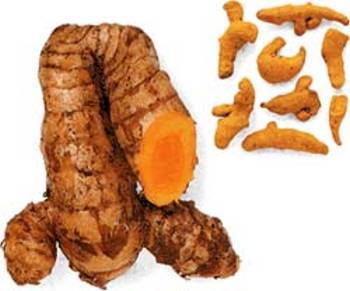
I’ve written a few posts about herbal medicine and in those posts I’ve been saying how using herbs can be a great way to achieve better health and wellness, and to experience healthy living.
In my most recent post about herbs, I told you about a number of herbs that have excellent medicinal capabilities.
Today I want to tell you about Turmeric, which is one of nature’s greatest wonder herbs.
Turmeric, which is a member of the ginger family, is commonly used in Indian cuisine as curry powder. It is native to South Asia.
Turmeric has been used historically as a component of Indian Ayurvedic medicine since 1900 BCE to treat a wide variety of ailments.
Here is a list of ailments that turmeric is beneficial for:
Alzheimer’s disease
Antibacterial
Anti-inflammatory
Antiseptic
Arthritis
Breast cancer
Childhood leukemia (reduced risk)
Colorectal cancer
Cystic fibrosis
Depression
Fat metabolism
Inflammatory skin conditions
Liver detoxification
Lung cancer
Multiple myeloma
Multiple sclerosis (MS)
New blood vessel growth in tumors
Pain reliever
Pancreatic cancer
Prostate cancer
Psoriasis
Rheumatoid arthritis
Tumors
Weight management
Wound healing
Studies have shown that turmeric has anti-tumor, anti-oxidant, anti-arthritic, anti-ischemic, and anti-inflammatory properties. In addition it may be effective in treating malaria, prevention of cervical cancer, and may interfere with the replication of the HIV virus.
In India, turmeric is readily available and has been used by many as an antiseptic for cuts, burns and bruises, and has also been used as an antibacterial agent.
It is said to contain flouride, which is beneficial for teeth. In some countries, turmeric is also taken as a dietary supplement to help with stomach problems.
In Japan turmeric tea under the name of Avea is sold as a treatment for depression.
Pakistanis also use it as an anti-inflammatory agent, and remedy for gastrointestinal discomfort associated with irritable bowel syndrome, and other digestive disorders.
In Afghanistan and North West Pakistan, turmeric is applied to a piece of burnt cloth, and placed over a wound to cleanse and stimulate recovery. Indians, in addition to its Ayurvedic properties, use turmeric in a wide variety of skin creams that are also exported to neighboring countries.
In the latter half of the 20th century, curcumin was identified as the ingredient in turmeric that was responsible for most of the biological effects of turmeric.
According to a 2005 article in the Wall Street Journal, research activity into curcumin is exploding and the U.S. National Institutes of Health had four clinical trials underway to study curcumin treatment for pancreatic cancer, multiple myeloma, Alzheimer’s, and colorectal cancer. Curcumin also enhances the production of brain-derived neurotrophic factor, or BDNF, which supports nerve growth.
There is evidence that piperine, found in black pepper, improves the absorption of turmeric. In 1998 researchers at St. John’s Medical College, Bangalore, India found that curcumin taken with 20 mg of piperine increased the absorption of curcumin by 2000%, with no adverse effects.
This means that a low dose of curcumin (or turmeric for that matter) could have a greater effect in terms of health benefits when combined with black pepper than a large dose of curcumin or turmeric would.
Dosages between half a teaspoon three times a day of a mixture of 16 parts of turmeric powder to 1 part of ground black pepper, and two teaspoons of turmeric powder and half a teaspoon of ground black pepper per day have been recommended.
Turmeric is undergoing research for potential benefits against a variety of cancers. In addition to cancer in general, some forms that it is being tested against, or may be useful against, include:
Breast cancer
Leukemia
Melanoma
Multiple myeloma
Pancreatic cancer
Prostate cancer
Turmeric is also considered to inhibit H. pylori, a bacteria which may provoke cancer.
So there you have it on turmeric, one of the truly great herbs around. Another great thing about turmeric is that you can use it either in cooking as a spice, or as a medicine.
Either way, you can’t go wrong if you use it as a regular part of your health practices. If you do, you’ll be well on your way to healthy living and living a Low Density Lifestyle.
I have a new free six-day email course that I am offering, entitled Enlightened Living: 6 Ways to Build an Authentic, Serene and Healthy Life. Read more about it here: The Enlightened Living Course or you can just sign up below to receive the course.
[gravityform id=”2″ title=”true” description=”true”]
